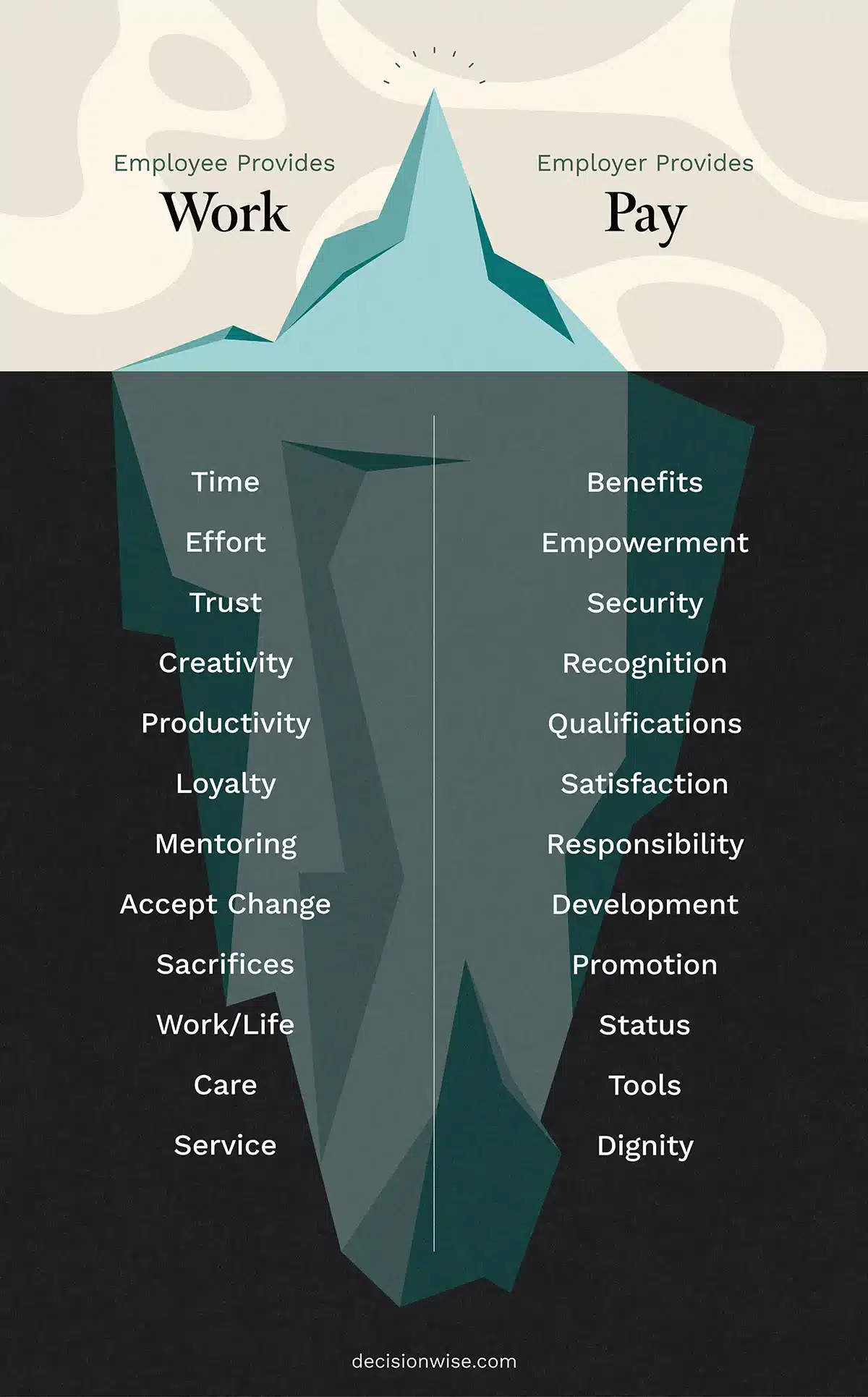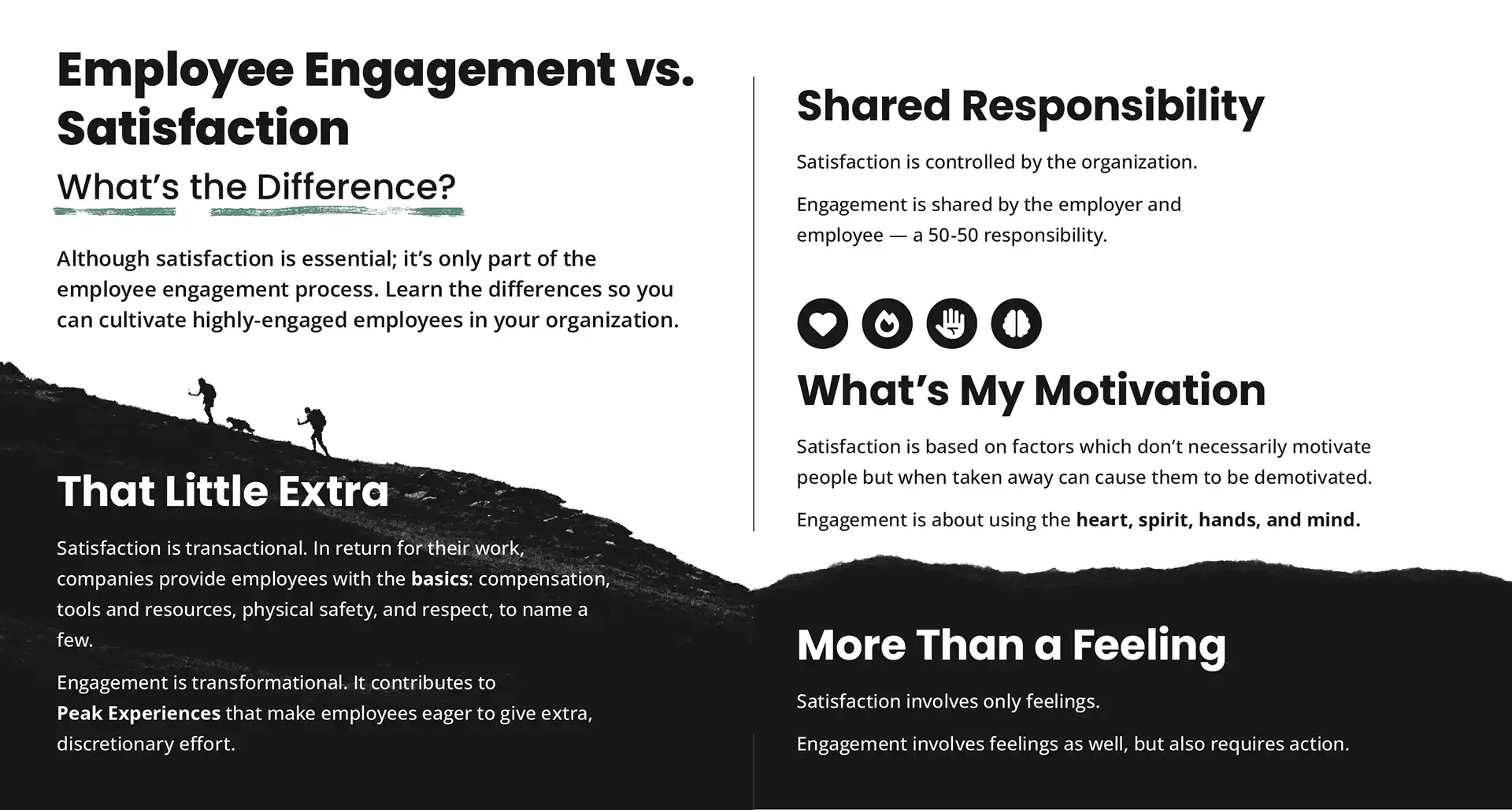Defining employee engagement is an important aspect of understanding how individuals interact with their work environment, and is critical to business success, leading to high-performing individuals and teams, and positive business outcomes.
However, organizations have various interpretations of employee engagement, leading to confusion in their initiatives. Employee engagement is often linked to categories such as rewards and recognition, learning and development, health and fitness, and perks and benefits.
To measure employee engagement, it’s essential to understand the different ways of defining it and sort through the various definitions and competing ideas. This article will simplify the different definitions and conflicting concepts to offer more clarity.
What Employee Engagement is Not
First, it’s important to define what employee engagement is not. It is often used to describe positive employee attitudes and behaviors. However, not all positive attitudes and behaviors are indicative of employee engagement. Conversely, not all negative attitudes and behaviors necessarily mean that an employee is disengaged.
Employee engagement is more than happiness, satisfaction, motivation, or empowerment. Employees may be satisfied with their job and motivated to perform well, but that doesn’t necessarily mean they’re engaged.
Conversely, an employee may exhibit behaviors that are typically associated with disengagement, such as being quiet during meetings or not volunteering for extra assignments, but this doesn’t necessarily mean they are disengaged.
Now that we have a good understanding of what employee engagement isn’t, let’s look at some different ways people define employee engagement.
Various Ways of Defining Employee Engagement
If you google “employee engagement definition,” you’ll find a seemingly unending list of definitions from consultants to multinational corporate conglomerates—and everyone in between. Here’s a selection of some of the best employee engagement definitions we’ve seen.
- “The emotional commitment the employee has to the organization and its goals.” Kevin Kruse, Forbes Contributor and NY Times Best Selling Author
- “The art of getting people to believe what you want them to believe.” Jim Whitehurst, CEO of Red Hat
- “Emotional connection an employee feels toward his or her employment organization, which tends to influence his or her behaviors and level of effort in work-related activities.” Business Dictionary
- “A business management concept that describes the level of enthusiasm and dedication a worker feels toward his/her job. Engaged employees care about their work and about the performance of the company and feel that their efforts make a difference.” Investopedia
- ”Employee engagement is the emotional attachment employees feel towards their place of work, job role, position within the company, colleagues and culture and the effect this attachment has on wellbeing and productivity.” HR ZONE
- “An emergent and working condition as a positive cognitive, emotional, and behavioral state directed toward organizational outcomes.” Michael Shuck and Karen Wallard
The DecisionWise Definition of Employee Engagement
DecisionWise defines employee engagement as:
“An emotional state where we feel passionate, energetic, and committed toward our work. In turn, we fully invest our best selves-our hearts, spirits, minds, and hands-in the work we do.”
When you see engagement, you know it. However, it is often hard to put into words. For example, when Douglas Conant took over as CEO of Campbell’s Soup in 2001, he called it a “bad” company. Its products were bleeding market share, and 62 percent of the company’s managers did not consider themselves actively engaged in their jobs. However, by 2009, 68 percent of the company’s employees reported being actively engaged, while only 3 percent reported feeling actively disengaged.
How did Conant do it? By embodying the phrase “Campbell valuing people, people valuing Campbell”, he was able to build a culture of employee engagement. He improved the physical surroundings by removing the barbed wire fence around the offices and focused on improving manager communication. Conant also instituted programs to celebrate individual success, from sending them personal thank-you notes to having lunch with employees.
The success of Campbell’s Soup under Conant’s leadership illustrates that creating an engaged workforce is about more than just providing perks like air-hockey tables or on-site clinics. Rather, it’s about creating an environment where employees feel valued, heard, and appreciated. When employees are empowered to invest their hearts, spirits, minds, and hands in their work, they become passionate, energetic, and committed to their jobs.
How the Psychological Contract Between the Employee and the Company Defines Engagement

While an employment contract may outline certain employment agreement terms, the psychological contract goes beyond these explicit terms to encompass the implicit expectations and obligations that define the relationship between the employee and the company.
These implicit expectations and obligations are shaped by the employee’s beliefs, values, and attitudes toward work and the company’s culture, values, and practices. The psychological contract is therefore a critical factor in determining the overall employee experience, as it can significantly impact how engaged and committed employees feel toward their work.
What’s the Difference Between Employee Satisfaction and Engagement?
Many leaders mistakenly believe that increasing employee satisfaction will automatically increase employee engagement and motivation. However, satisfaction is transactional and contractual. Employees expect compensation, tools, resources, physical safety, dignity, and respect in exchange for their work. For a satisfying work relationship, both the organization and the employee must make constant deposits in the relationship “bank account.”
Satisfied employees put out as much effort as they are compensated for, and no more. They deliver what is asked of them if the employer delivers on their part of the deal. They show up and do their work, but that doesn’t necessarily mean they are going to say no to other job offers. A satisfied employee does not necessarily equate to a fully engaged and committed workforce.
Achieving Employee Engagement: A Shared Responsibility
Employee engagement matters. Getting employee feedback on their engagement levels is crucial by conducting an employee engagement survey. These survey results provide engagement scores to help determine where your workplace falls on the engagement spectrum. This, in turn, allows you to create an employee engagement strategy to improve your work engagement.
Defining employee engagement is recognizing that it’s a 50/50 proposition, with the responsibility to become engaged falling on both the employee and the organization. Employee engagement means creating a workplace culture where both the organization and the employees become engaged. Doing so can improve your company culture, growth, and profit.






